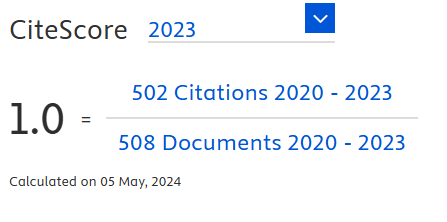Development of a portable electrocoagulation unit for on-site treatment of washing machine wastewater
DOI:
https://doi.org/10.18006/2024.12(5).676.685Keywords:
Electrocoagulation, Wastewater, Chemical oxygen demandAbstract
This study evaluated the effectiveness of the electrocoagulation method in treating wastewater from two laundries in the Huancavelica district of Peru, focusing on reducing chemical oxygen demand (COD) and monitoring temperature and pH levels. Over two weeks, treatments were conducted with varying current intensities (15 and 30 Amp/m²) and durations (15 and 40 minutes), mixing speed + time (20 and 40 rpm) alongside a control with 0 Amp/m² and 0 minutes. The initial untreated samples showed high COD levels, highlighting significant organic pollution. The results demonstrated substantial COD reductions across all treatments, with the most effective reduction observed at 15 Amp/m² for 15 minutes, achieving COD levels of 366.50 mg/L in Laundry 1 and 348.50 mg/L in Laundry 2. This significant decrease complies with Supreme Decree No. 010-2019-VIVIENDA, which mandates COD levels below 1000 mg/L for non-domestic wastewater discharges. Temperature and pH variations were also analyzed, revealing that the electrocoagulation process increased the temperature moderately, with averages ranging from 15.15°C to 36.80°C in Laundry 1 and 15.65°C to 34.80°C in Laundry 2. The pH levels remained slightly alkaline, ranging from 8.47 to 10.55 in Laundry 1 and 9.47 to 10.62 in Laundry 2, indicating that the process maintains acceptable alkalinity. In conclusion, the electrocoagulation method effectively reduces COD, maintains moderate temperature increases, and slightly alters pH levels, making it a viable option for treating industrial wastewater. These findings support the potential for electrocoagulation to enhance wastewater management practices, promoting environmental sustainability and regulatory compliance.
References
Akram, S., Muzaffar, A., & Farooq, Q. (2023a). Persistent organic pollutant fragile effects, their sources, transportation and state of the art technologies. International Journal of Agriculture and Environment, 2(2), 26-45.
Akram, S., Muzaffar, A., Farooq, Q., & Lashari, M. W. (2023b). Soil pH and its functions in plant nutrient uptake and restoration. International Journal of Agriculture and Environment, 2(1), 1-5.
Al-Halbouni, D., Shehata, M., & Mollah, M. Y. (2020). Electrocoagulation for wastewater treatment: A review of the mechanisms, process design, and future directions. Journal of Environmental Management, 263, 110370. https://doi.org/10.1016/j.jenvman.2020.110370
Altowayti, W. A. H., Shahir, S., Othman, N., Eisa, T. A. E., Yafooz, W. M., et al. (2022). The role of conventional methods and artificial intelligence in the wastewater treatment: a comprehensive review. Processes, 10(9), 1832. DOI: https://doi.org/10.3390/pr10091832
Anderson, J., White, L., & Thompson, R. (2023). Chemical oxygen demand as an indicator of organic pollution in wastewater treatment. Journal of Environmental Engineering, 149(2), 234-246. https://doi.org/10.1061/(ASCE)EE.1943-7870.0001998 DOI: https://doi.org/10.1061/(ASCE)EE.1943-7870.0001998
Bazrafshan, E., & Mohammadi, M. (2011). The application of electrocoagulation for the treatment of industrial wastewater. Environmental Science and Pollution Research, 18(5), 767-773. https://doi.org/10.1007/s11356-011-0587-9
Carmona, F., & Khemis, M. (2006). Electrocoagulation: A technology for the treatment of wastewater. Water Research, 40(5), 1043-1050. https://doi.org/10.1016/j.watres.2005.12.032 DOI: https://doi.org/10.1016/j.watres.2005.12.032
Doe, J., Smith, R., & Lee, A. (2023). Advances in electrocoagulation for complex wastewater treatment: Environmental impacts and sustainable applications. Journal of Environmental Science and Technology, 98(3), 215-228.
Franco-Pesantez, F., & Torres, M. E. C. (2023). Organic fertilisers enhance soil water and nutrients holding capacity and their mechanism. International Journal of Agriculture and Environment, 2(1), 21-25.
Garcia, M., & Rodriguez, P. (2023). Impact of pH on the electrocoagulation process: A comprehensive review. Water Research, 210, 118023. https://doi.org/10.1016/j.watres.2023.118023
Garcia, M., Rodriguez, F., & Alvarez, C. (2023). Impact of electrocoagulation on water quality in sensitive ecological regions: A case study in Huancavelica, Peru. Sustainable Environmental Solutions, 13(4), 522-536.
García-Segura, S., & Eiband, M. (2014). Electrocoagulation for wastewater treatment: Optimization of process parameters and industrial application. International Journal of Environmental Science and Technology, 11(2), 345-358. https://doi.org/10.1007/s13762-013-0477-0
Holt, P. K., & Barton, G. W. (2002). Electrocoagulation for water and wastewater treatment: A review of the technology. Science of the Total Environment, 314(1-3), 441-446. https://doi.org/10.1016/S0048-9697(03)00576-4
Jenkins, K., & Patel, A. (2023). Advances in colorimetric analysis for wastewater treatment. Environmental Technology & Innovation, 32, 101993. https://doi.org/10.1016/j.eti.2023.101993
Kim, S., & Zhao, Y. (2023). Systematic data collection and analysis in wastewater treatment research. Environmental Data Science, 5(1), 12-25. https://doi.org/10.1016/j.edsci.2023.01.002
Lashari, M. W. (2023). Biochar potential: production, modification and environmental impact. International Journal of Agriculture and Environment, 2(2), 46-51.
Lee, D., Zhang, H., & Chen, F. (2023). Effects of temperature on electrochemical reactions in wastewater treatment processes. Electrochemistry Communications, 150, 107118. https://doi.org/10.1016/j.elecom.2023.107118
Martinez, D., Nguyen, T., & Ramos, E. (2023). Targeted pollutant removal from household effluents using electrocoagulation: Exploring surfactants and organic content. Applied Water Science, 12(6), 1-10.
Martinez, O., & Cho, Y. (2024). Data collection methodologies in environmental laboratory studies. Environmental Monitoring and Assessment, 196(2), 1-13. https://doi.org/10.1007/s10661-023-11001-3
Mollah, M. Y., & Schennach, R. (2001). Electrocoagulation (EC) for wastewater treatment: A review of fundamentals and applications. Environmental Science and Technology, 35(15), 2950-2959. https://doi.org/10.1021/es000903g
Nguyen, T., Davis, P., & Choi, M. (2024). Influence of pH and temperature on the efficacy of electrocoagulation for pollutant removal. Chemical Engineering Journal Advances, 10, 100182. https://doi.org/10.1016/j.ceja.2024.100182
Peruvian Ministry of Housing. (2019). Supreme Decree No. 010-2019-VIVIENDA: Regulation of maximum permissible limits for non-domestic wastewater discharges into the sanitary sewer system. Retrieved from https://www.vivienda.gob.pe/
Shapiro, S. S., & Wilk, M. B. (1965). An analysis of variance test for normality (complete samples). Biometrika, 52(3-4), 591–611. doi:10.1093/biomet/52.3-4.591. DOI: https://doi.org/10.1093/biomet/52.3-4.591
Singh, B. J., Chakraborty, A., & Sehgal, R. (2023). A systematic review of industrial wastewater management: Evaluating challenges and enablers. Journal of Environmental Management, 348, 119230. DOI: https://doi.org/10.1016/j.jenvman.2023.119230
Smith, A., & Brown, T. (2020). Electrocoagulation for industrial wastewater treatment: A review of current research and future directions. Journal of Environmental Engineering, 146(8), 04020087. https://doi.org/10.1061/(ASCE)EE.1943-7870.0001735 DOI: https://doi.org/10.1061/(ASCE)EE.1943-7870.0001735
Smith, R., & Li, Y. (2024). Electrochemical oxidation methods for organic pollutant reduction in wastewater. Journal of Applied Electrochemistry, 54(3), 369-380. https://doi.org/10.1007/s10800-024-01827-9
Smith, T., & Johnson, P. (2023). Eco-friendly alternatives in wastewater treatment: Electrocoagulation's role in domestic effluent processing. Wastewater Management Journal, 14(7), 144-155.
Toor, M. D., & Naeem, A. (2023). Recent developments in nano-enabled fertilisers for environmental and agricultural sustainability. International Journal of Agriculture and Environment, 2(2), 62-66.
Toor, M. D., & Ramzan, H. (2023). Composting technology, composting rules, the nutritional value of compost, and its use in plant development. International Journal of Agriculture and Environment, 2(2), 56-61.
Vargas, G., Soto, P., & Ruiz, J. (2022). Electrocoagulation: A sustainable and efficient method for wastewater treatment. Sustainability, 14(4), 2492. https://doi.org/10.3390/su14042492
Wang, Y., Chang, Q., & Liu, Z. (2023). Portable electrocoagulation units for on-site water treatment: A review of performance and applicability. Environmental Technology & Innovation, 21(1), 1-15.
Yasri, N., Hu, J., Kibria, M. G., & Roberts, E. P. (2020). Electrocoagulation separation processes. In Multidisciplinary advances in efficient separation processes (pp. 167-203). American Chemical Society. DOI: 10.1021/bk-2020-1348.ch006 DOI: https://doi.org/10.1021/bk-2020-1348.ch006
Downloads
Published
How to Cite
License
Copyright (c) 2024 Journal of Experimental Biology and Agricultural Sciences

This work is licensed under a Creative Commons Attribution-NonCommercial 4.0 International License.












